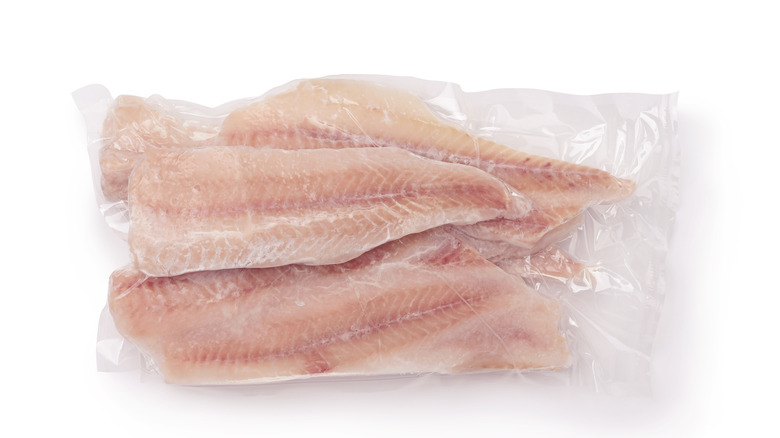Why You Should Think Twice Before Buying Red Snapper
Do you love fresh fish? We sure do. From a simply seasoned whole grilled fish to seafood stew to sushi, we love the versatility that fish brings to the table when we've tired of our favorite meat and veggie options. Apart from its flavor, fish brings a slew of health benefits along with it — from a decreased risk of heart attacks to a protective action against cognitive decline (via The National Library of Medicine) to a rich array of essential vitamins and minerals, including D, B2, iron, and zinc (via Washington State Department of Health).
As delicious and as healthy as fish can be, however, indulging in it can be fraught with several serious issues. One of them is the matter of overfishing, a global problem which threatens fish populations and habitats the world over (via Environmental Defense Fund). And another is the issue of something called seafood fraud, in which popular types of fish are commonly swapped out for less desirable species, but labeled and sold incorrectly in order to deceive customers and turn a profit (via Oceana).
Red snapper often falls prey to fish fraud
If you love red snapper, you're not alone. This saltwater fish is highly desired for its flaky texture and sweet, delicate flavor (via Food Network). Red snapper also wins points for its versatility, taking well to a variety of cooking methods that include broiling, grilling, pan- or deep-frying, steaming, or baking (via Food Network). Thanks to its desirability, red snapper can be pricey, fetching up to $36 per fish or $17 per pound for fillets.
Because it's a consumer favorite, snapper commonly falls prey to something called seafood fraud. As explained by the Oceana, the most common type of seafood fraud is what you might call "the old bait and switch": when a package of a cheaper, less desirable fish is labeled as a more expensive, coveted species and sold to an unknowing customer — thereby generating larger profits for the retailer. According to Oceana, recent studies have found that sought-after species of seafood are mislabeled between 25% and 70% of the time — and red snapper is among the most common offenders, especially when ordered in a restaurant.
"Research has found that 74% of sushi places and 38% of restaurants mislabeled seafood, and snapper topped the list," Dr. Lori Shemek told The Healthy.
Still want to indulge in snapper? Simply learn what it looks like and buy it whole from a trusted fishmonger — then cook it at home — so you know you're getting what you paid for.

